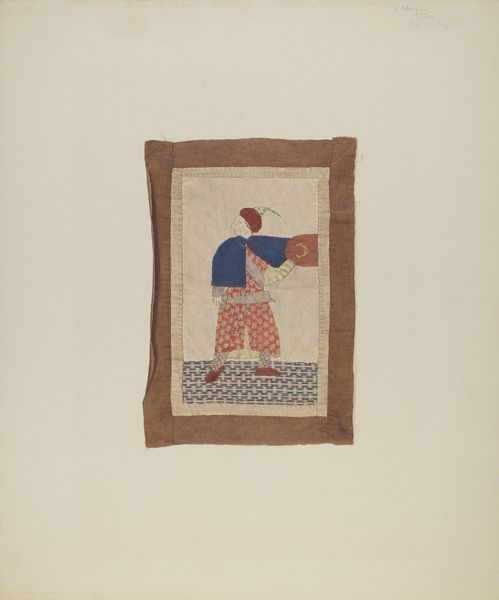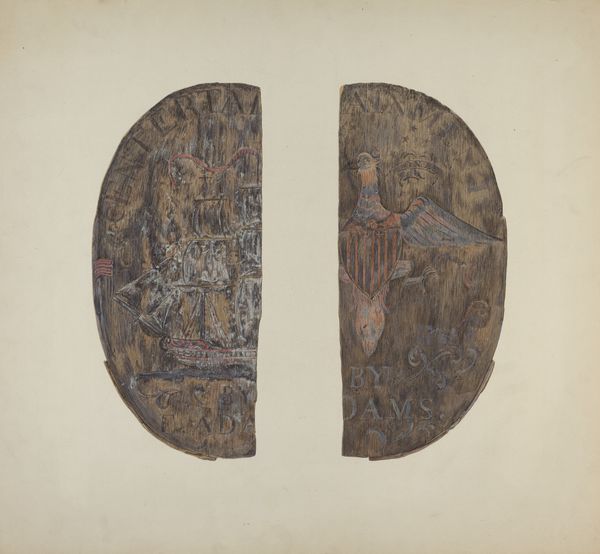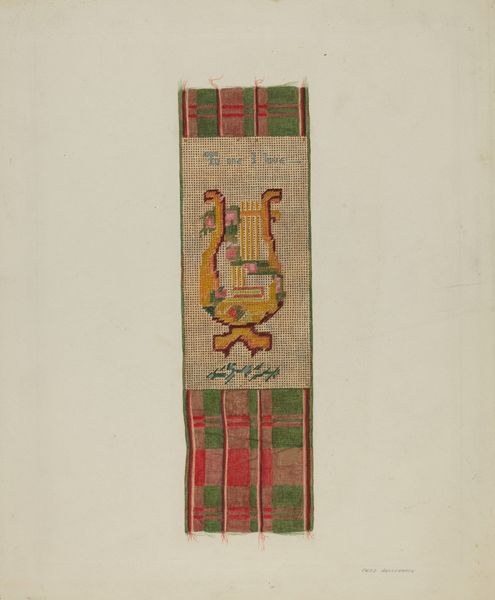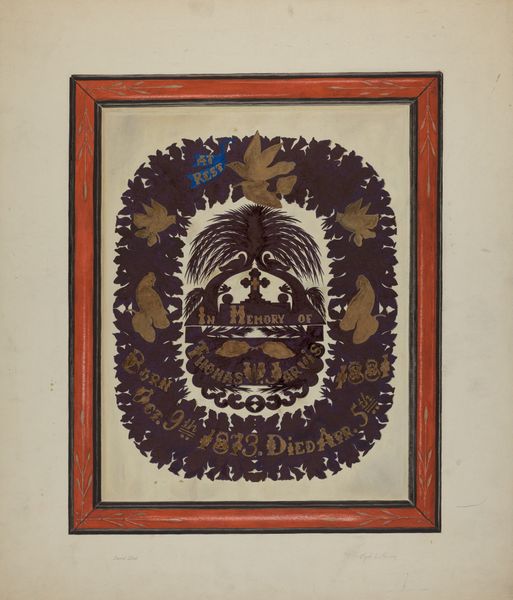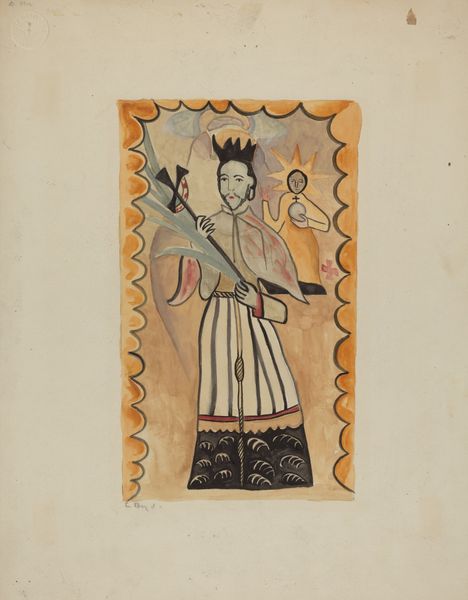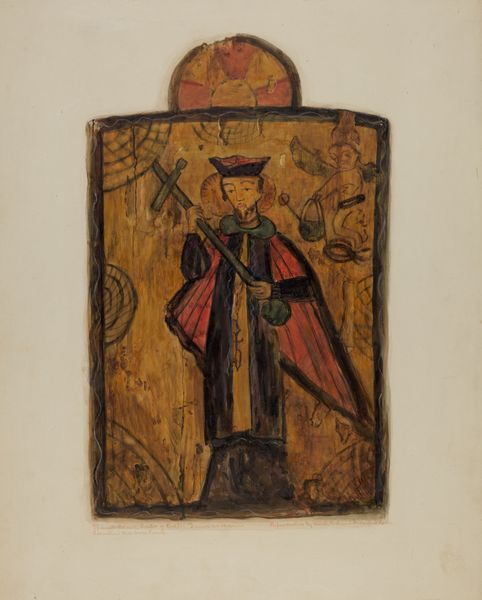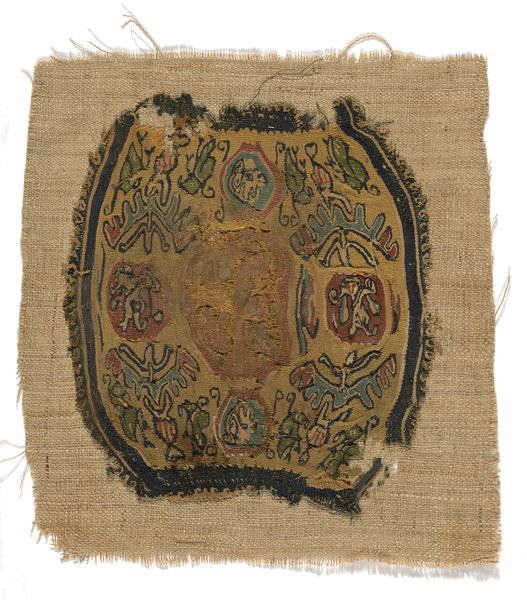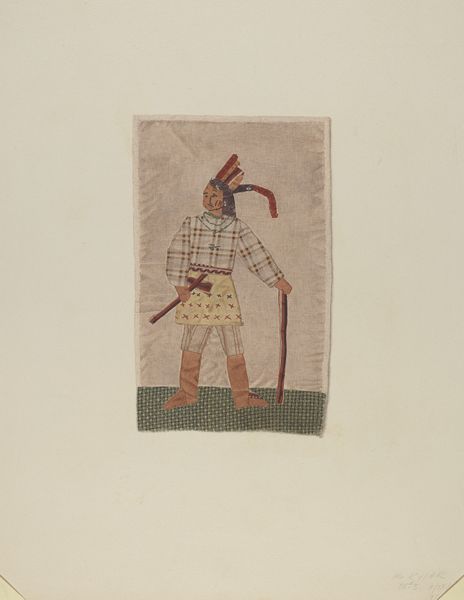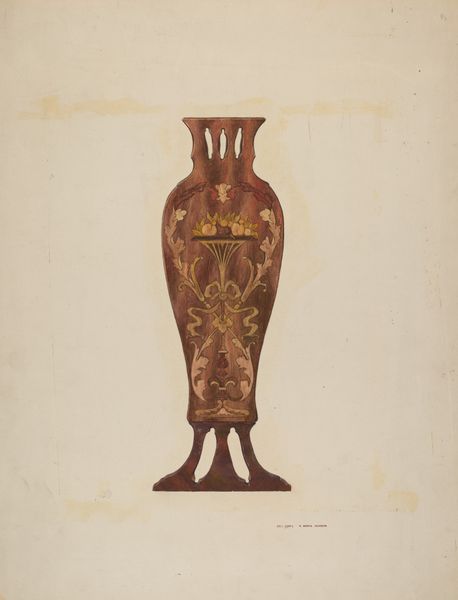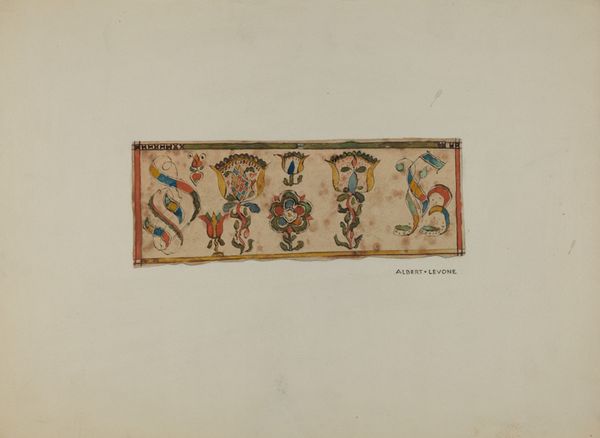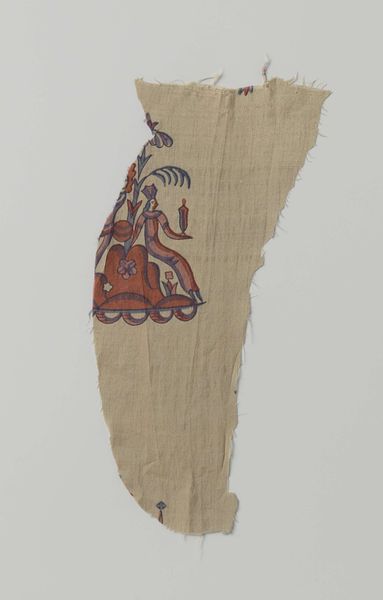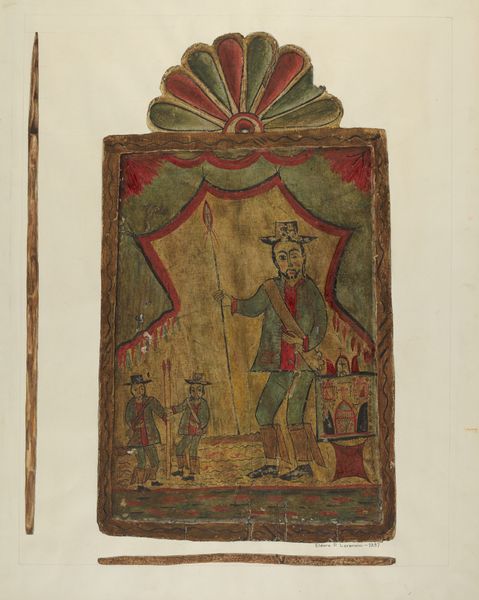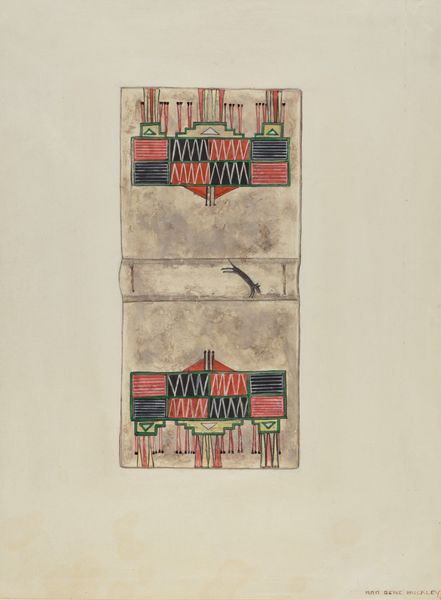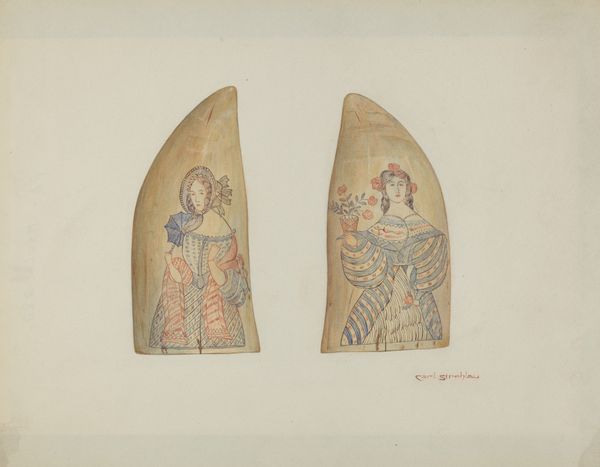
drawing
#
drawing
#
toned paper
#
light pencil work
#
pencil sketch
#
possibly oil pastel
#
coloured pencil
#
underpainting
#
pastel chalk drawing
#
watercolour bleed
#
watercolour illustration
#
watercolor
Dimensions: overall: 30.6 x 22.9 cm (12 1/16 x 9 in.)
Copyright: National Gallery of Art: CC0 1.0
Curator: Look at this, a drawing entitled "Retablo" by Majel G. Claflin, created sometime between 1935 and 1942. Editor: My first thought? There's something endearingly fragile about this saint figure. The paper itself looks aged, and you can almost feel the artist's breath lingering on the surface. A colored pencil, perhaps? Curator: Quite possibly, and maybe even watercolor and pastel chalk. The texture is intriguing. Claflin clearly draws on the retablo tradition. The Spanish term refers to devotional paintings, often on wood, commonly found in churches and homes throughout Latin America and the Southwestern US. But there's a twist, of course. Editor: Ah, that "twist" you speak of? It’s less about reverence and more about...reflection, maybe? He's a handsome saint, though... almost aware he’s posing! And the colours she uses -- not traditionally sacred, more… human. Curator: Well, Claflin worked in Taos, New Mexico. In the early 20th century, it became a hub for artists drawn to the region's rich cultural heritage, so you see appropriations, but also challenges. Religious art moved into a commercial domain, sold in galleries and gift shops to tourists. There’s that tension that reflects those social shifts. Editor: That's true. You can sense a bit of the gift shop in it -- a token. A sort of commentary. A questioning of the sacred amidst an increasing commercialism of spirituality, perhaps? Instead of just presenting tradition, there’s that nudge, that little wink... as if she’s showing you behind the curtain, just for a moment. Curator: Absolutely. Claflin encourages us to contemplate the role of religious iconography and authenticity, within evolving socio-economic structures. It's beautiful, accessible, yet full of conceptual depths. Editor: This little artwork… more than what it appears at first glance, eh? And somehow, profoundly human because of its questions. Curator: Exactly. And the questioning continues now, through our discussions. Thank you. Editor: Always a pleasure.
Comments
No comments
Be the first to comment and join the conversation on the ultimate creative platform.
